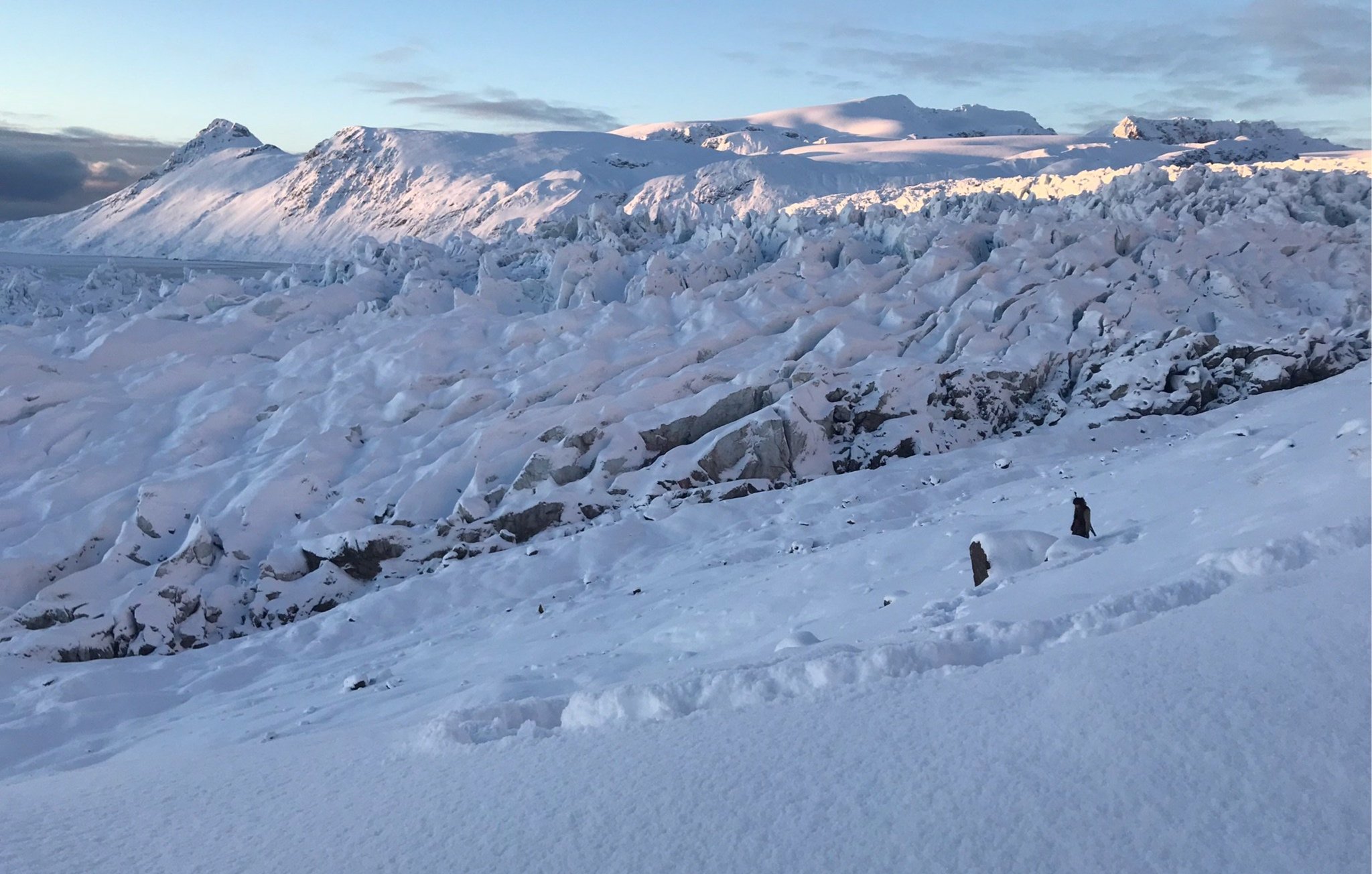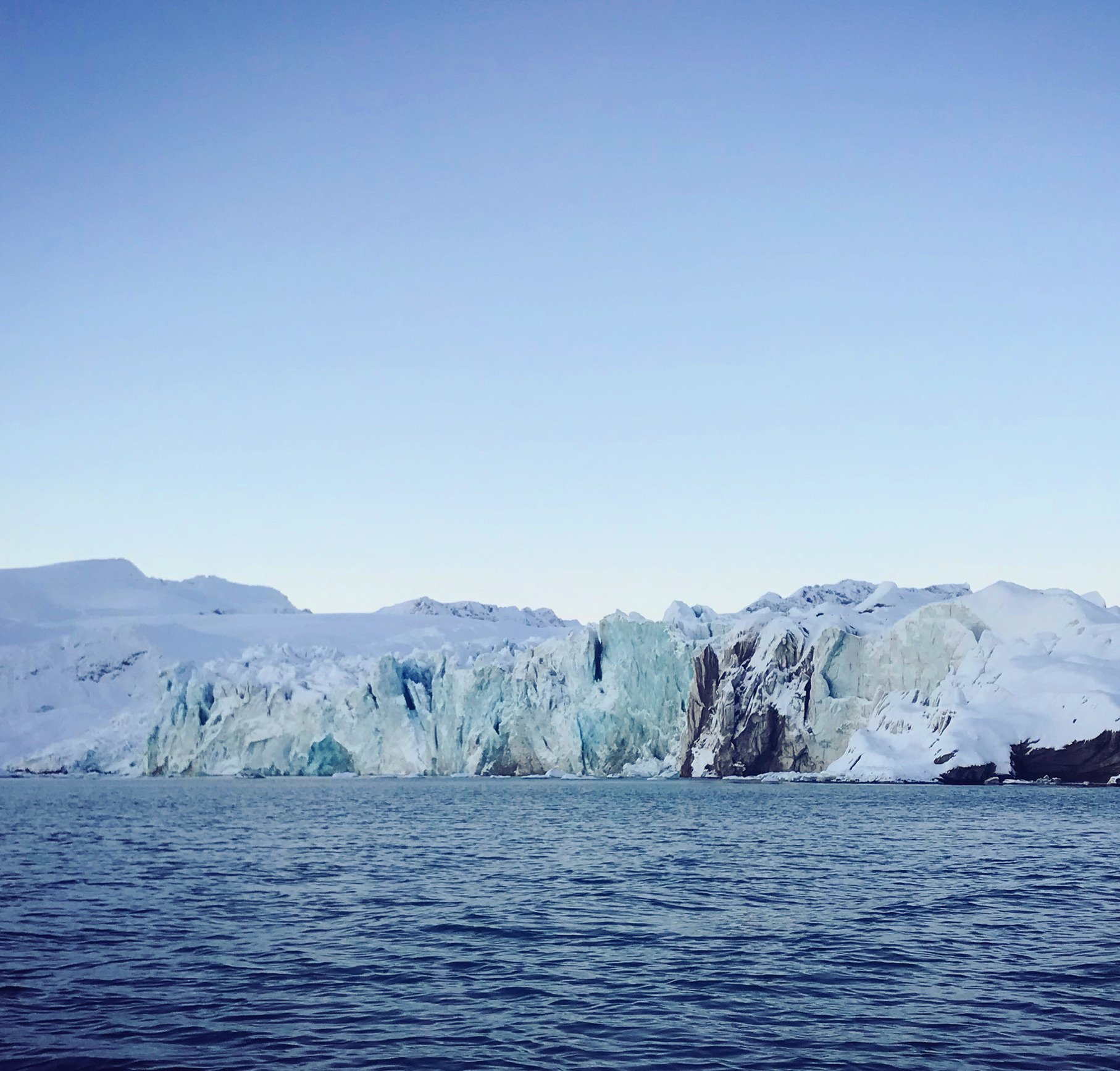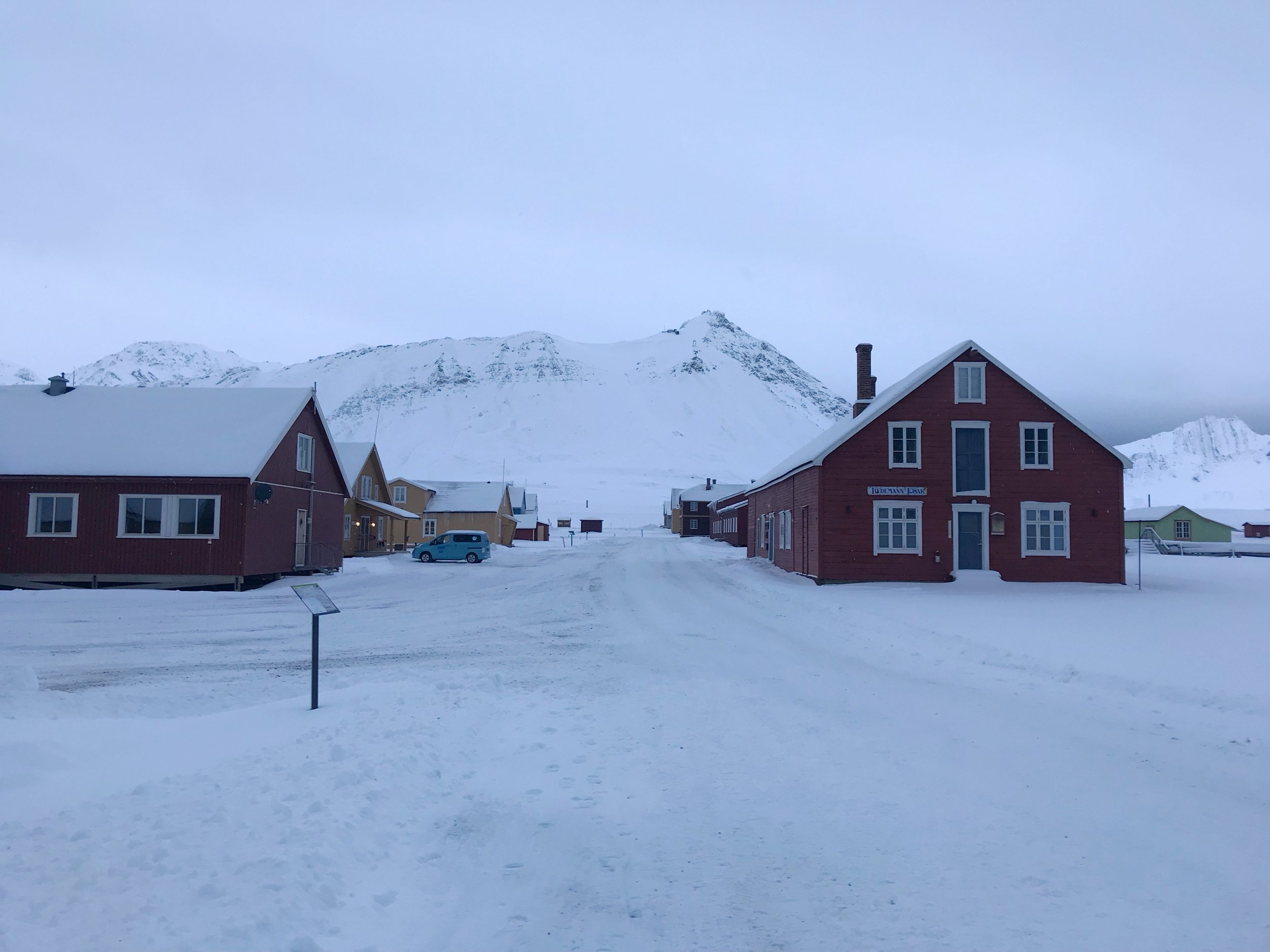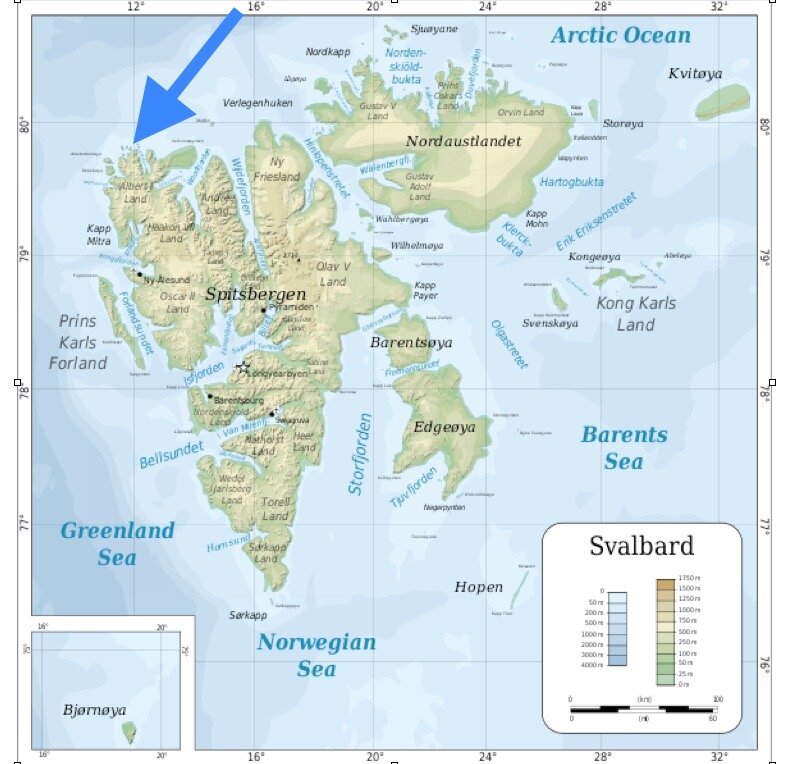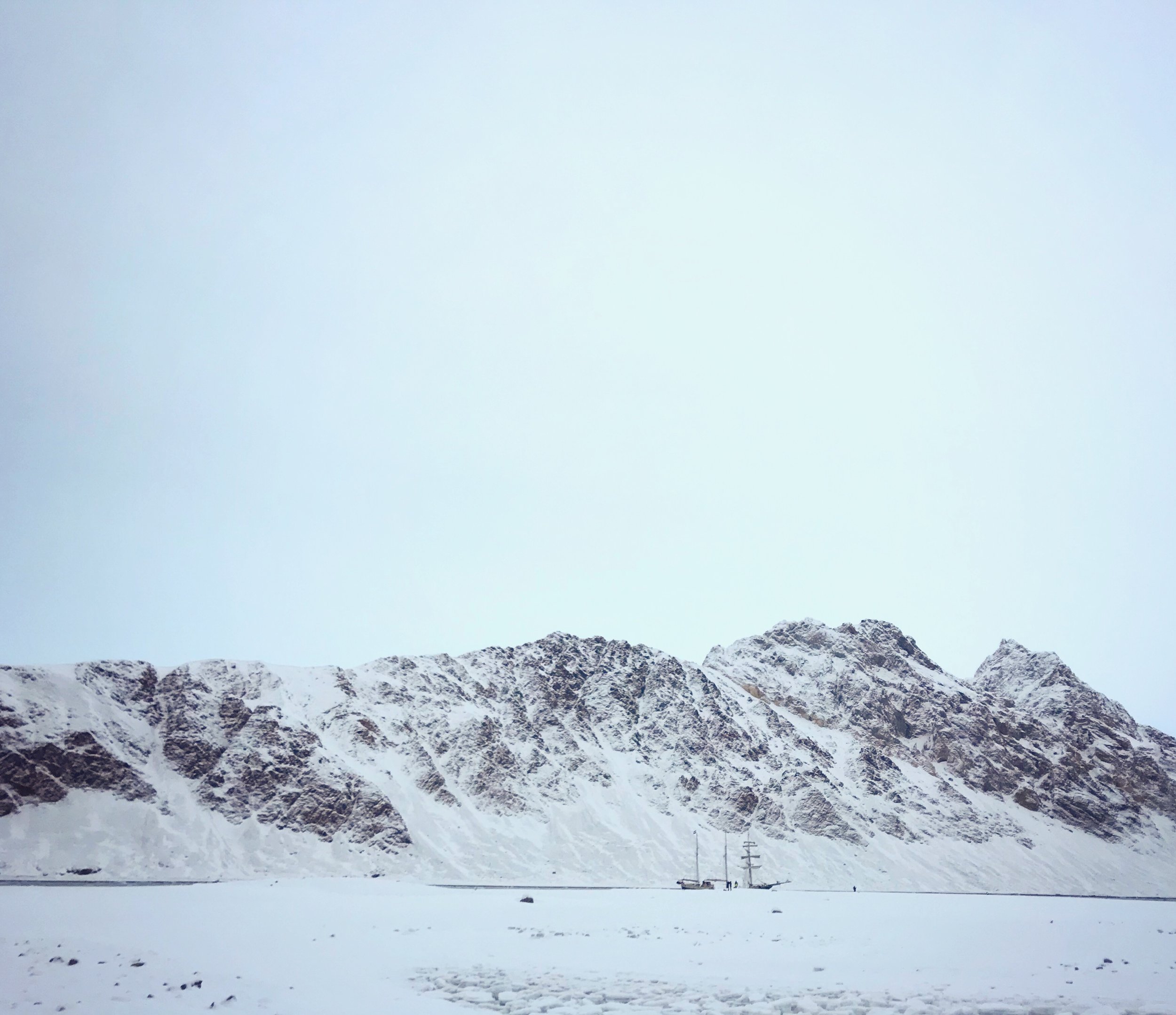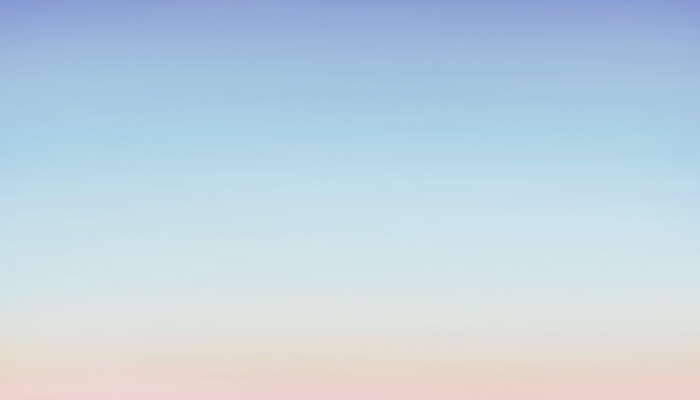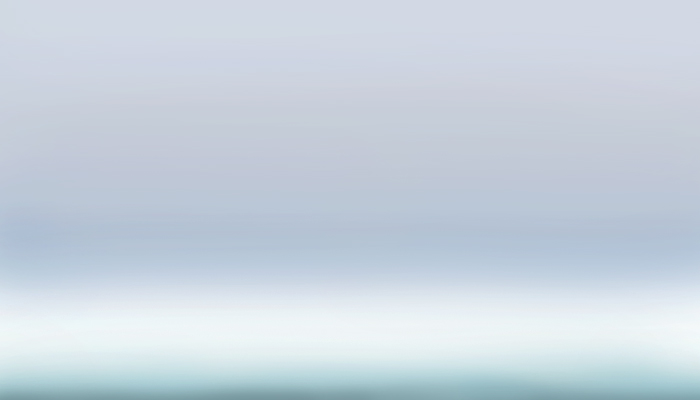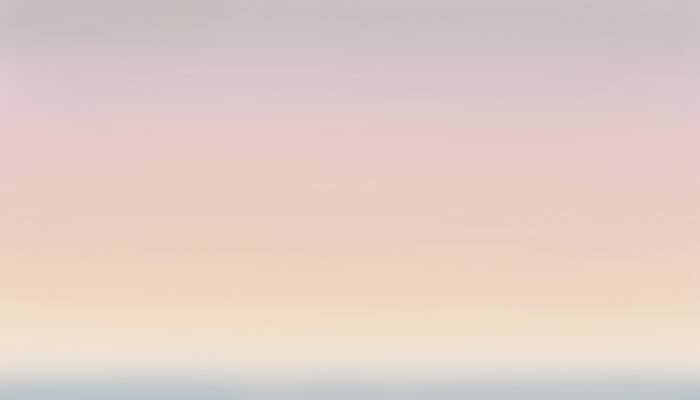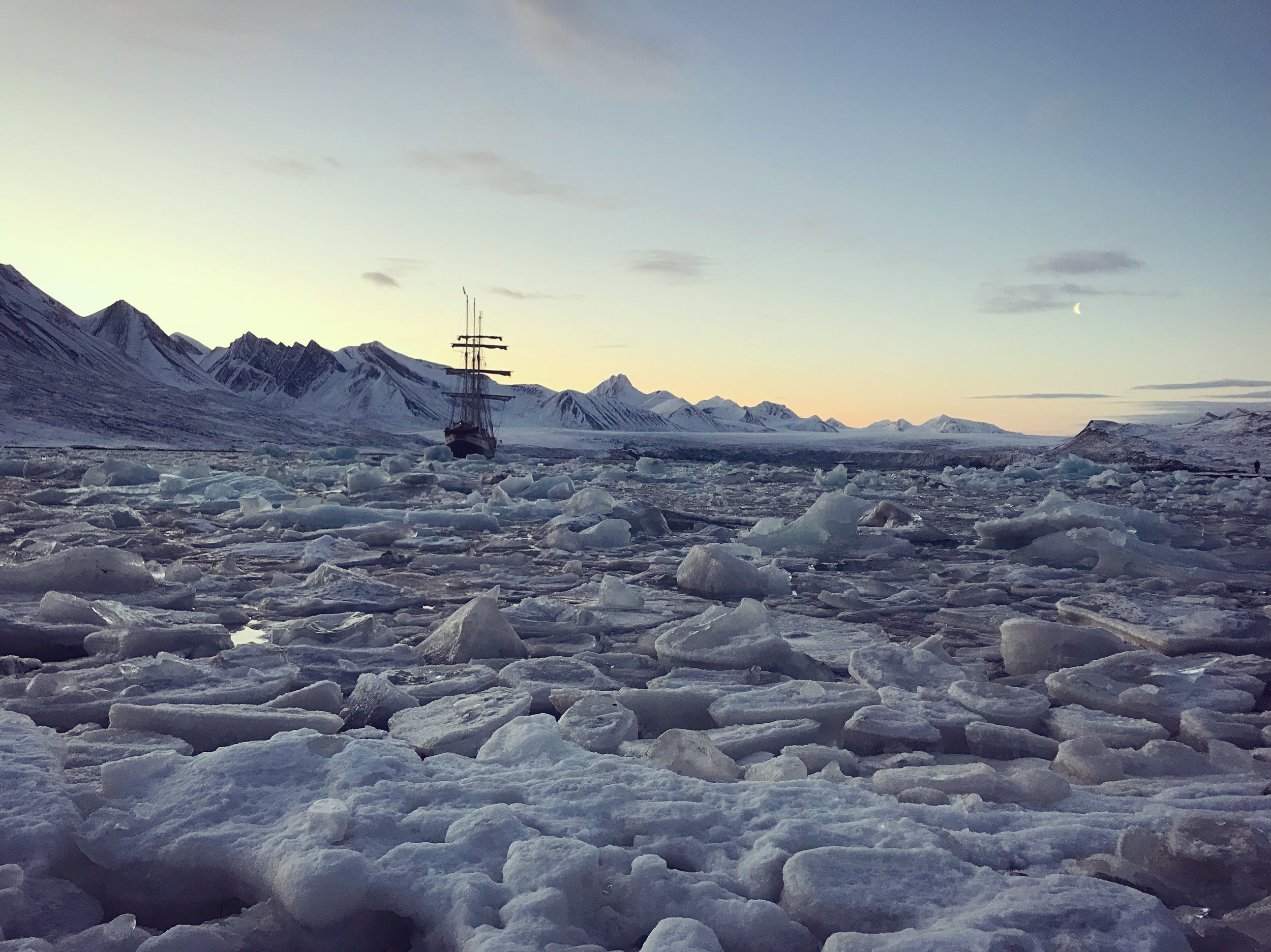Blomstrandbreen, after hiking its eastern side.
Thursday, October 11, 2018
Clear morning with clouds and snow in the afternoon, -3°C
Yesterday, the upper hike was nice - it wasn’t nearly as challenging as the Ytre Norskøya hike, just challenging and long enough to feel invigorating. We hiked up the moraine - rocky and steep-ish - to a level area that overlooked the glacier, Blomstrandbreen.
It was spectacular. The light was as alluring as I’ve ever seen. I stopped multiple times on the way down to take photos of the sky. Barely watching where I was walking, I tripped over rocks and stumbled - but never took my eyes from the horizon.
These memories and photos contain material for hundreds of paintings. I’m eager to start painting them once I get back home.
Looking towards the Three Sisters while docked at Ny Ålesund.
Ny Ålesund town rules.
Then, after Blomstrandbreen, we sailed a short distance to dock at Ny Ålesund — an international research station and the northernmost year-round occupied settlement in the world. There, we arrived around 8pm, perhaps. We were able to go into town! Now feeling somewhat alien to be in a contemporary settlement of any size, we tumbled into the history museum that stayed open 24/7. In it, there were displays of info about the mining history of town and the trappers, and it outlined the historic attempts to cross the north pole: two flights in 1925-26 and the airships around 1928. Amundson and Umberto Nobile, most notably. Nobile flew to the north pole successfully but crashed tragically on the return.
The next morning, we had breakfast and Åshild took us on a tour around the village. Kristen told us stories of the zeppelin landing point and the stories of those buried in the old graveyard. The most memorable, of a woman who fell in love with a trapper, left her family, and went off into the wilderness with him and another man. They treated her like dirt and some people from town found her almost dead. They brought her back to Ny Ålesund with them and tried to save her life, but she died there shortly after.
Zeppelin anchor in Ny Ålesund.
We walked back to town from the zeppelin anchor point and graveyard, and headed towards the only shop in town to buy souvenirs. I bought a buff that says Ny Ålesund, a tin cup with the town name and its global coordinates, some stickers, and a chocolate bar for Denny. It all fit into a tote bag with the name and coordinates that I’ll give to mom.
We were back on board the Antigua for lunch and moved just a short distance to the other side of Ny Ålesund from the island and did a landing in an area with some old huts and a decrepit train from a marble mining operation that folded. I’ve started to get less patient about feeling cold, so it’s probably almost time to go home. Maybe it’s being back in civilization (no matter how small) that makes me miss some modern comforts.
Once we boarded the ship for the night, we had dinner of salad, white rice, and chili, which was delicious. Then headed south to beat the storms once again.
I stayed up to play cards with several of the other artists. We played some rummy then a game of burro, which is like spoons - mostly a game of chance and speed. We all had a good time, and it was nice to let loose a bit. The ship was moving the whole time we played, but I felt better. My sea sickness had finally gone. So, I treated myself to a glass of red wine as we played cards. Headed down to bed probably around 10pm or so, I drifted off to sleep with a grin on my face. I was super happy to have finally kicked that feeling of sickness while we were moving and glad to have shared some laughs with my shipmates.
Looking to the settlement of Ny Ålesund from the pier towards the general store (left with the van in front of it) and the Ny Ålesund Museum (right). A zeppelin garage once perched on this mountain above town.
During the second excursion of the day, exploring broke-down train parts and other mining ruins.
I awoke with a jolt around 1am. The ship lunged, rose, and fell. So many sounds of things shifting and groaning with the motion, both above us and below. Since our cabin was close to the front of the ship, the motion felt exaggerated as our bunks lurched through the dark.
This activity is made possible, in part, by funds provided by the Metropolitan Regional Arts Council (MRAC) through a grant from The McKnight Foundation.
